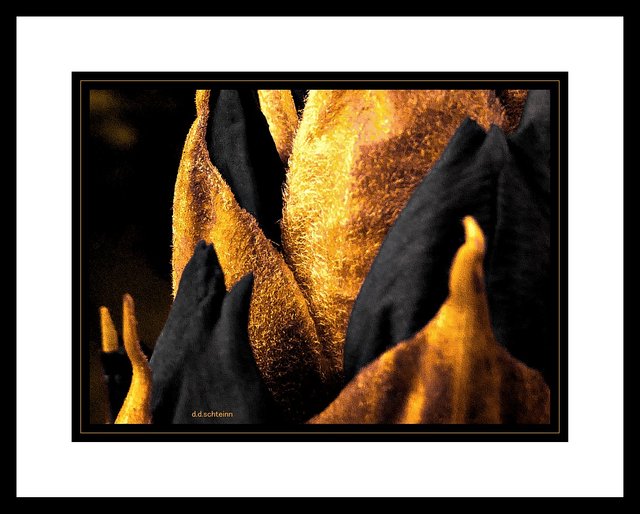A Schteinn Science Report ~ Circular~
Photographs taken by the Deep Space Explorer Satellite - MrPeabody IV. Designed and built by the Engineering Department of the Schteinn College Of The Sophisticated Sciences
NOTE: The enclosed photo was taken by remote control once the auxiliary, planet-surface probe Sherm 128.2 returned to the Deep Space Explorer Satellite bay, and was then beamed back to us here on Earth.
~Jupiter~


Florathickgasus redspoti-pondweedus var. Jupiterplanetoides
Common Name: Jupiterian Thick-Gas Pond-Weed Flower
Jupiter, Largest Planet Of The Solar System
This highly unique, rather large flower (sample: 10 cm x 5cm) is a fine, yet previously unkown flowering plant from Jupiter, 5th planet of our solar system from the Sun. We, unfortunately, only have the one sample to study, but more on that later in this article.
Jupiter -- The Giant Gas Ball
If one was to truly search for an in-hospitable planet, Jupiter would fit the bill. The planet is considered a 'gas giant', one of only two in our solar system of this type. Though possibly sporting a rocky core of various elements, most of the planet is composed of gases, with no true solid surface. The most prevalent gases are hydrogen and helium.
Jupiter is a massive planet, 143,000 km (89,000 miles) wide at the equator -- and though hard to fathom -- all of the other planets of the solar system would fit within Jupiter, if one were so inclined to attempt this fete. As another comparison, 1,300 Earth's would fit within this giant.
A Tale Of Two Temperatures
Jupiter is an enigma in the temperature realm of things, with the center tagging the thermometer at approximately 24,000° C (43,000° F), and the clouds above Jupiter registering a very cold -143° C (-234° F). In contrast, the center of Jupiter is actually hotter than the surface of the sun. The force of gravity on Jupiter is 2.4 times that on Earth.
Deep below the racing clouds of Jupiter, resides an amazing ocean of liquid metallic hydrogen. This is due to the incredible pressures within the atmosphere, and this pressure converts the normally gaseous hydrogen to an actual liquid. The spinning of this ocean of hydrogen metal as Jupiter spins in orbit, causes the strongest magnetic field in the solar system.
Probing The Great Red Spot
The Sherm 128.2 probe was sent into the center of the Great Red Spot -- the huge, hurricane-like storm that has been present and visible for over 2000 years -- with the intent of sampling gases and vapors from the storm center. We did not think the likelihood of life on Jupiter was possible, and were not, therefor, looking for it to appear.
Lo and Behold
When the Sherm 128.2 docked with the MrPeabody IV Satellite, and was then robotic-ally 'gone over', believe it or not, a PLANT was discovered, protruding from the muffler region of the exhaust port, located posterior upon the probe. The flowering plant was removed by robotic arm and the incredible photograph you see in this article, is what was discovered.
What is truly amazing, is that this plant appears to be magnetically charged! It was actually attached to the Ferro-telslatic Catyonic Converter assembly by magnetic force. Once removed, it flew across the satellite bay, and attached itself to the Navigation Bulkhead, which contains even more iron in it's composition.
Whether a normal botanical trait of this species, or just a by-product of spinning about in the magnetic cloud, we are uncertain. Further study is needed.
Unfortunately, we at S.C.S.S. are not sure of the exact location from which this flowering plant originated, as the storm is a swirling maelstrom of gasses with no visibility or GPS coverage. However, it should be obvious to even the average lay-scientist, that this flower is a prime example of a pond-weed type construction of the flowering plants of similar nature found on Earth.
Since the plant was pulled from the gas clouds, the name Thick-Gas Pond-Weed was assigned to our new species.
Future Research
Further study into this species is needed, once we expand space exploration and land human biologists on the surface of Jupiter. This may be long in coming, as The Science and Technology does not yet exist to allow us to survive these harsh, gaseous conditions, as well as the winds of Jupiter. They are known to accelerate to over 400 mph. Very windy indeed.
Also of note, we have not yet been able to perform further remote studies upon the sample of Florathickgasus redspoti-pondweedus., due to technical difficulties of an embarrassing nature.
Surprisingly, the plant has an incredibly strong magnetic pull, and is still lodged upon the bulkhead of the MrPeabody satellite docking bay. Evidently the magnetic forces displayed by this plant are greater than the 128.6 pounds of pull the robotic arm displaces. A bit embarrassing, but we hope to have this solved fairly soon. Stay tuned for more information, just as soon as we get the flowering plant down off the wall, and it becomes available.
Botanical Summary/Comparisons
Closest Comparative Plant on Earth: Mississippi Delta Pond-Weed
Reproduction Methodology: UNKNOWN, likely Asexual, due to high winds
Size Range: One Sample, 10 cm x 5 cm
Life Span: UNKNOWN
Colorization: Apricot, to Atomic Tangerine and black. (Unsure if black portion is exhaust-port damage to the cell structure, or a true color of the flowering plant
Poste Script: This image may have received "just a wee bit" of manipulation by the author, to get the colors "just right" for this particular Deep Science Project.
Seven Day Series -- Photos Of Cool Plants Of Our Solar System
Indigo Saturday -- Planet Mercury
Violet Sunday -- Planet Venus
Red Monday -- Planet Mars

[Official Science Press Credential Here]
A huge shout-out from the freelance Science Reporter's cardboard holler-horn goes out to the amazing @ocrdu for creating this marvy little identification credential for The Schteinn Science Report. Not only is it ultra-cool, but it allows me to poke about into databases and other places I'm probably not supposed to be. Though that IS the point of this on-the-edge, razor-sharp Science reportage.

That photo is amazing. It really should be hanging in a gallery somewhere.
Downvoting a post can decrease pending rewards and make it less visible. Common reasons:
Submit
Thank you, as long as I can add the genus and species title, adds a bit of panache to the art world...
Downvoting a post can decrease pending rewards and make it less visible. Common reasons:
Submit
No kidding? Some people have called me the "gassy giant"...
Downvoting a post can decrease pending rewards and make it less visible. Common reasons:
Submit
: O
Downvoting a post can decrease pending rewards and make it less visible. Common reasons:
Submit
Wow that is a great article.. Upped your post and following you. Hope to see more of your great posts.
Downvoting a post can decrease pending rewards and make it less visible. Common reasons:
Submit
Thanks, appreciate the view and compliments. They are enjoyable to write, re-learning things I'd forgotten about the planets and having a bit of fun at the same time. Gotta love Steemit.
Downvoting a post can decrease pending rewards and make it less visible. Common reasons:
Submit
It makes me happy to visit your blog dear friend @ddschteinn I enjoy good reading and creativity, besides the ingenious images, congratulations dear friend for the good work, thank you very much for the good humor that you put to work
I wish you a good night
Downvoting a post can decrease pending rewards and make it less visible. Common reasons:
Submit
Thanks so much for the view and your continual support. I greatly appreciate it. But I can't take credit for the images, as they're from space ( :
Downvoting a post can decrease pending rewards and make it less visible. Common reasons:
Submit
Great science report! Jupiter is one of my favorite planet and the color of the flower is beautiful!
Downvoting a post can decrease pending rewards and make it less visible. Common reasons:
Submit
Thanks for the compliment. And I really appreciate your continual support of my 'work'. Means alot to me.
I'm learning about the planets again putting this out. Things I've forgotten over time. Some are rather amazing, and right up there in the night sky. Sound like I'm 5 again, eh?
Downvoting a post can decrease pending rewards and make it less visible. Common reasons:
Submit
With my pleasure! I love to see the sky in the night and learn about the planets, too! There are many beautiful stars! Look forward to your next report with much interest! :)
Downvoting a post can decrease pending rewards and make it less visible. Common reasons:
Submit